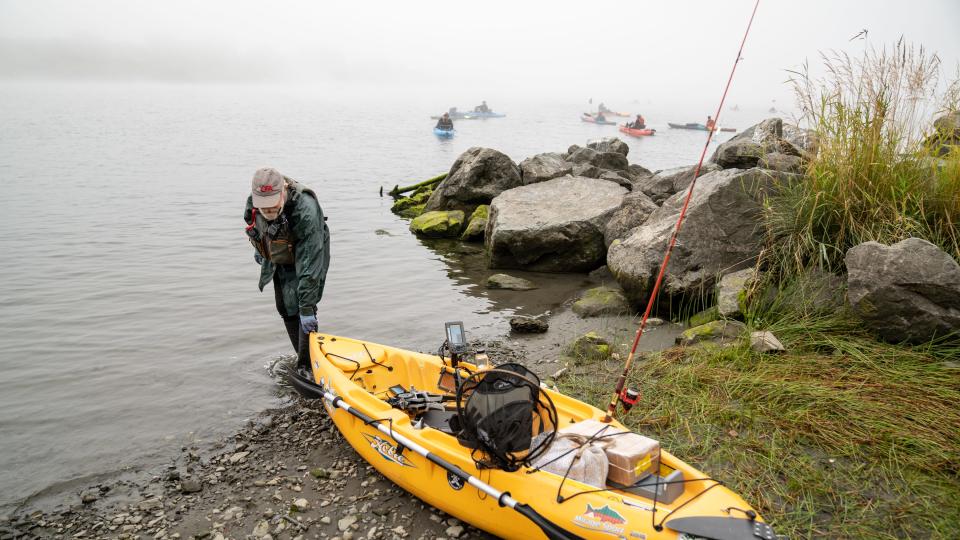Tribes guard the Klamath River's fish, water and lands as restoration begins at last
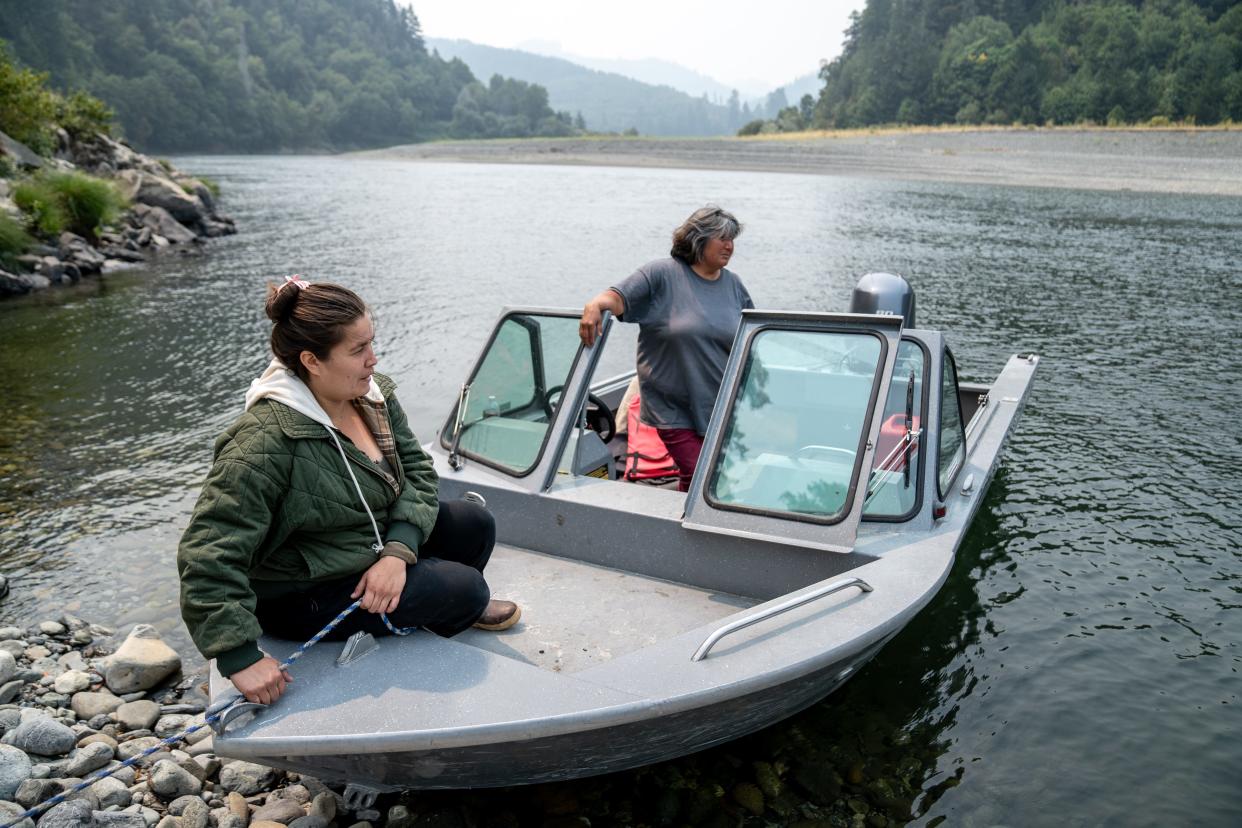
Restoring a River:
River in recovery| Water shortages| Returning to the Klamath| Restoration begins | Salmon revival
REQUA, Calif. — Queen Gensaw skylarked around and between her parents, Oscar and Georgianna, at the Yurok Tribe's boat ramp at Requa, or Rek-woi, the “mouth of the creek” where the Klamath River meets the Pacific Ocean.
Here, millennia of flowing water infused with sand, silt and the occasional river-smoothed rock has created a cleft about 125 feet deep by nearly 1,000 feet wide. Queen, who is 7, examined shells and danced around the asphalt as her parents talked nearby. For the Yurok fighting to restore the river and secure one of their cultural touchstones — the salmon — Queen and her friends are the future.
Requa, on the north side of the Klamath’s massive mouth, is one of California's longest continually inhabited places. It's at one end of the Yurok's 44-mile-long by 2-mile-wide reservation and it was once home to a prosperous fishing industry. Redwood trees and other vegetation tower over homes and a 110-year-old hotel, and at the river’s edge, the Yurok Tribe’s fisheries department sits within the now-tranquil community.
Sea lions cavort in the Klamath’s waters, their growls and barks adding sharp accents to the gentle lapping of the river as it completes its 263-mile journey. The Klamath winds from its headwaters in Upper Klamath Lake through the high desert and grasslands of southern Oregon, between the peaks of the Cascades, eventually creating its own valley as it swells from its meetings with the Salmon, Shasta, Scott and Trinity rivers and numerous creeks and finally kisses the Pacific Ocean.
The south side is part of Redwood National Park, portions of which lie within the tribe’s reservation boundary, and the location of Wehl-kwew, a Brush Dance site that belongs to the family of Yurok General Counsel Amy Cordalis.
Since time immemorial, Yurok people have built plank homes, raised families, harvested salmon, steelhead and surf fish and carefully stewarded their waters and lands along the lower Klamath.

Traders, settlers, lost treaties
The Yurok and other tribes along the Klamath and its watershed had little contact with Europeans, other than a few traders, until California became a U.S. state in 1850.
After the failure of treaties, the U.S. established a reservation for the Yurok along the final 20 miles of the Klamath from Requa in 1855, hoping to keep Indians and settlers apart. The "Klamath River Reservation" was soon joined by the larger Hoopa Reservation in 1864, and the two were joined into one in 1891 when the Yurok's trust land was extended to the confluence of the Klamath and Trinity rivers.
The Dawes Act, also known as the General Indian Allotment Act of 1887, led non-Indians to claim part of the Yurok's lands through homesteading. Lumber companies grabbed land as well as farmers, and many Yuroks were forced out of their villages. Some moved to Hoopa, others contrived to stay within their ancestral lands.
Non-Indians took commercial fisheries from Yuroks and established canneries around Requa in the early 20th century. In just a generation, fish numbers plummeted, and, in 1933, the California Department of Fish and Game closed the Lower Klamath to fishing. Native people were prohibited by law from fishing for subsistence or commercial purposes even after recreational fishing returned.
That didn't stop the Yurok from continuing their millennia-long practices of feeding their families from the Klamath's bounty.

Tribal fishing rights affirmation leads to ‘salmon wars’
In 1969, Yurok tribal member Raymond Mattz was arrested and charged with illegal fishing by the state. Mattz took his case all the way to the U.S. Supreme Court, which affirmed the tribe's fishing rights in 1973.
The state again halted fishing in 1978, citing low fish numbers. The Yurok disagreed, pointing to damage from logging and other upriver activities that had degraded water quality, and they resumed subsistence fishing.
That sparked the Klamath Salmon Wars.
Yuroks were harassed, beaten and threatened by federal and state officials as they tried to enforce yet another fishing moratorium. Mattz, who was Masten's uncle, told PBS station KAET that agents woke his family in the middle of the night to look for fish. Yurok elders feared for their lives when agents tried to pull nets out of their hands as they fished in small boats.
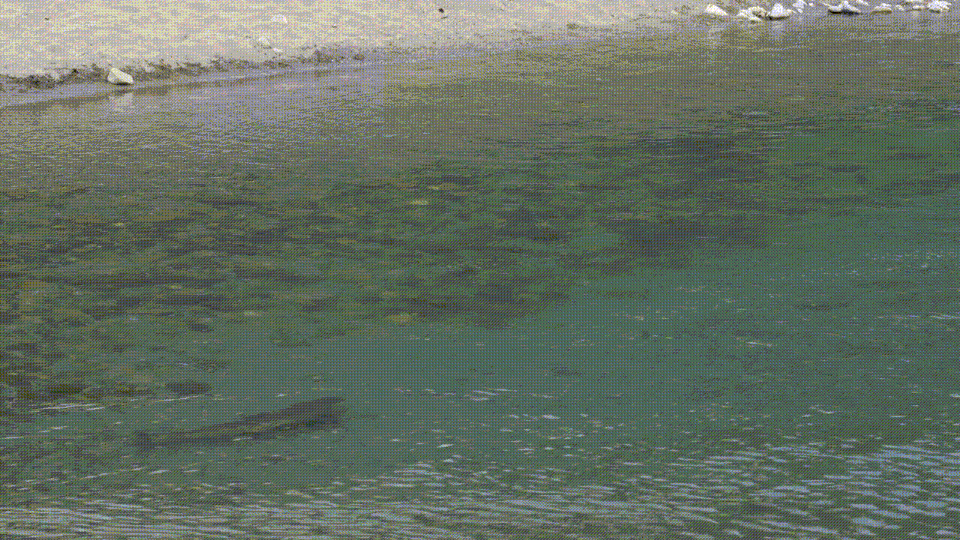
Eventually, the war ground down as authorities realized the tribe would continue to assert its inherent authority.
A massive fish kill in 2002, caused after warm algae-infested waters flowed down the lower Klamath River from Iron Gate Dam, reinforced the Yurok's determination to restore the river.
Klamath River tribes started a campaign to persuade the dams' owners to dismantle the four dams they identified as a major cause of the salmon's decline. Fish protectors went to Scotland to persuade the dams' new owners, Great Britain-based Scottish Power, to dismantle them. They traveled to Scottish Power's headquarters, then to Omaha after Berkshire Hathaway purchased the dam complex, to protest. They drove all night to Sacramento to protest and attend public hearings on the issue.
"Unless you've had to stand and smell the stench of death from the road and look at your river and feel like it's dying and there isn't anything you can do about it, unless you felt that frustration and that anger of knowing those dams are obsolete, let's not make any forums about it," Georgianna Gensaw said.
"I did all those rallies and protests, being pregnant and having both my kids," Georgianna Gensaw said. She recalled driving their canoes to Omaha, where they had to stop and water them down so they wouldn't dry out, all so they could confront the dam owners and operators about how they were destroying their salmon, their river and their culture.
"We are a land-based religion," she said. "We cannot move. We cannot go anyplace else. You can take your reservoir house and boat house and go anywhere else but we can't."

Karuk: Restoring water with fire and fish
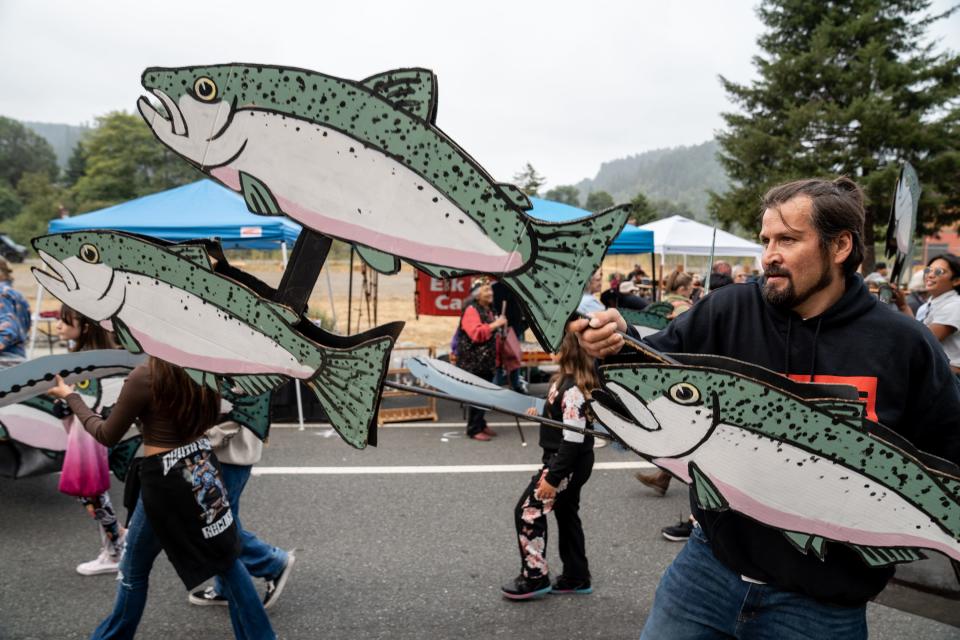
Upriver from the Yurok, in Orleans, Bill Tripp works with a team of wildland firefighters to return fire to the lands that Karuk people have lived in and stewarded for millennia. Tripp, director of natural resources and environmental policy for the Karuk Tribe, is one of the leaders of a tribal movement to return cultural fire to lands to help restore not only the lands but the waters that flow through the land.
Tripp and the Karuk people know well the consequences when tribes are barred from traditional stewardship. In 2020, the tribe lost half the town of Happy Camp to the Slater Fire, including all its elder housing and many homes. Two residents also lost their lives. Indian Creek is still being rehabilitated, Tripp said, as part of the fire recovery effort.
'Our right to fire': Tribes battle agencies, old policies to restore fire practices
The 2022 McKinney Fire further contributed to the Klamath's water quality and fish woes. Four people who couldn't escape the racing flames died and the debris flow from the fire killed thousands of fish in the Klamath.
The Karuk also suffered greatly from the failed treaty effort after California statehood. They were removed from their ancestral home along the Klamath from Weitchpec to Seiad Valley and placed on the Hoopa Reservation, which was meant to house many tribes.
The Karuk people crept back to their rightful lands only to find that the U.S. government had appropriated nearly all their 1 million-acre ancestral homeland, creating the Six Rivers and Klamath National Forests. Some land was held in private hands.
Like other river tribes, the Karuk depend on salmon and other fish for subsistence. They suffered from the near death of the salmon fishery and the collapse of the lands and waters. And like other tribes, the Karuk have taken action to reclaim their ancestral stewardship.
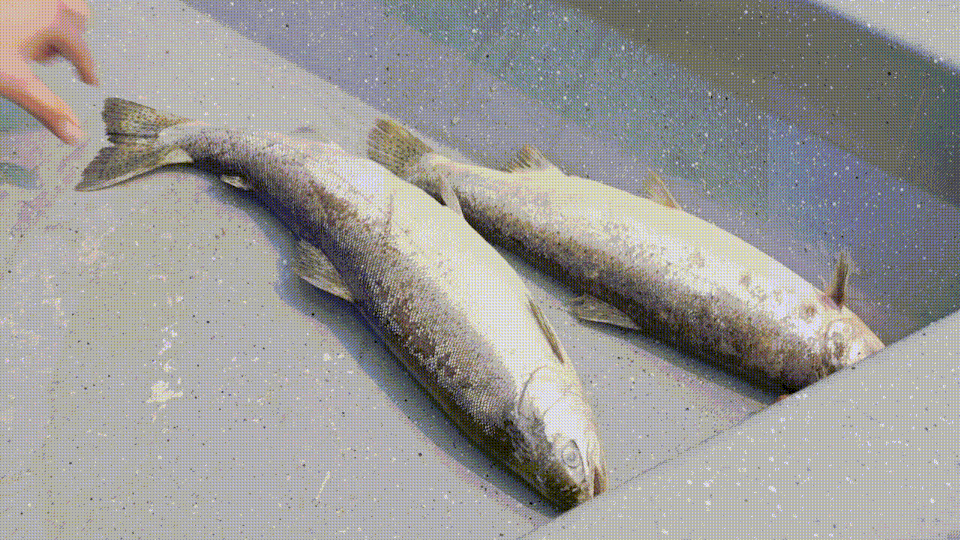
The tribe, which has about 3,500 members and about 5,000 descendants, has regained control of just a tiny fraction of that land. As of January 2023, when President Joe Biden signed the Katimiîn and Ameekyáaraam Sacred Lands Act, the Karuks held 2,100 acres of noncontiguous trust land and 822 acres of private land. But they're still determined to exert their ancestral sovereignty to clean up and sustain their lands and waters.
Karuk formed the Western Klamath Restoration Partnership with the Forest Service, water and forest restoration groups, universities and environmentalists to address the situation. They hold TREX, or training and fire exchange, events to train fire personnel, restore fish habitat and develop an overall strategy based on tribal ecological knowledge.
It's not been an easy journey to bring fire back to the land. In 2022, the Forest Service halted prescribed burning, which threw Karuk's cultural burning plans off track, forcing them to delay their summer burning schedule until October when conditions weren't as favorable.
Tripp said cultural learning that Native peoples had employed over thousands of years had become removed from land and water management systems.
"It only takes 2,000 years for species to evolve with something that's constant in our environment," he said. Karuk and other Indigenous peoples have been interacting with the Klamath Basin ecosystem for 11,000 and more years, and Tripp said local species would have evolved alongside human stewardship activities. He said he hopes management policies shift to looking at species in decline more generally to avoid the years-long delays in implementing management plans that current policies call for.
"But we can still be looking at having some forethought and saying, 'Hey, this is how the dynamics exist,'" he said. "Let's create our prescriptions in a way that will benefit those habitat dynamics."
East of where Tripp and his crew are returning fire to the land, groups work to restore side creeks damaged by recent huge fires and earlier gold mining. Their goal is to give salmon clean, quiet waters to spawn and for the juvenile fish to grow strong for their eventual journey downstream.
About 150 river miles upriver from the Klamath's mouth in the Horse and Eagle creek areas, a consortium of nonprofits and tribes showed how they're sprucing up salmonid homes in preparation for the return of historic salmon runs.
Mitzi Wickman, a fishery and GIS specialist with Mid Klamath Watershed Council, said the Karuk and Yurok tribes did in-depth studies on what juvenile salmon need to grow and thrive during the winter and spring, when water in the main channel is high.
"They found you really need off-channel habitat like low-velocity water," she said.
The group dredged new ponds in the side creeks starting in 2010 to harbor the juveniles.
"The results were amazing," Wickman said. "The juvenile fish loaded up in these lower velocity habitats and thrived."
The bigger and fatter the small fish grow, the better chance they have of surviving in the ocean long enough to come back and create new fish generations, she said.
That success spurred the group on to build even more habitats while cleaning up the leftover debris from gold mining operations. They also added wood structures to the ponds, which the salmon love to inhabit, Wickman said. And, the numbers of returning adults are also growing.
The past seven years, the number of Coho salmon redds, or nests, has grown from about 44 to more than 200 in the Horse Creek watershed alone, Wickman said.
"You can do restoration that makes a difference," Wickman said. "It's so rewarding to see the numbers of returning salmon that are pretty dramatic."
Debra Krol reports on Indigenous communities at the confluence of climate, culture and commerce in Arizona and the Intermountain West. Reach her at debra.krol@azcentral.com. Follow her on X, formerly Twitter, @debkrol.
Coverage of Indigenous issues at the intersection of climate, culture and commerce is supported by the Catena Foundation.
My work is free to read, but your subscriptions support more such great reporting. Please consider subscribing today.
Next up:
Klamath Dam removal is just the first step, say tribes
Debra Utacia Krol
Arizona Republic
REQUA, Calif. - The last of four hydroelectric dams on the Klamath River is expected to come down in 2024, restoring the river's full flow and the spawning grounds for fish for the first time in more than 100 years.
Fish protectors like Oscar and Georgianna Gensaw of the Yurok Tribe expect the salmon's return to take years. Also ahead are the arduous tasks of restoring forests ravaged by huge wildfires, repairing the damage to creeks and rivers that were dredged and channelized to dry up wetlands that once made their waters clear and pure, and mitigating other damage to lands and waters occurring over the past 150 years.
But for the people who live there - and some who have lived on the river for up to 15,000 years - the removal of the dams is just the beginning of the Klamath's recovery.
This article originally appeared on Arizona Republic: Tribes work to protect the water, land on the lower Klamath River
